How to prune grape vines – for healthy, productive plants
Learn how to prune grape vines correctly and you’ll be able to enjoy fresh, homegrown grapes for years

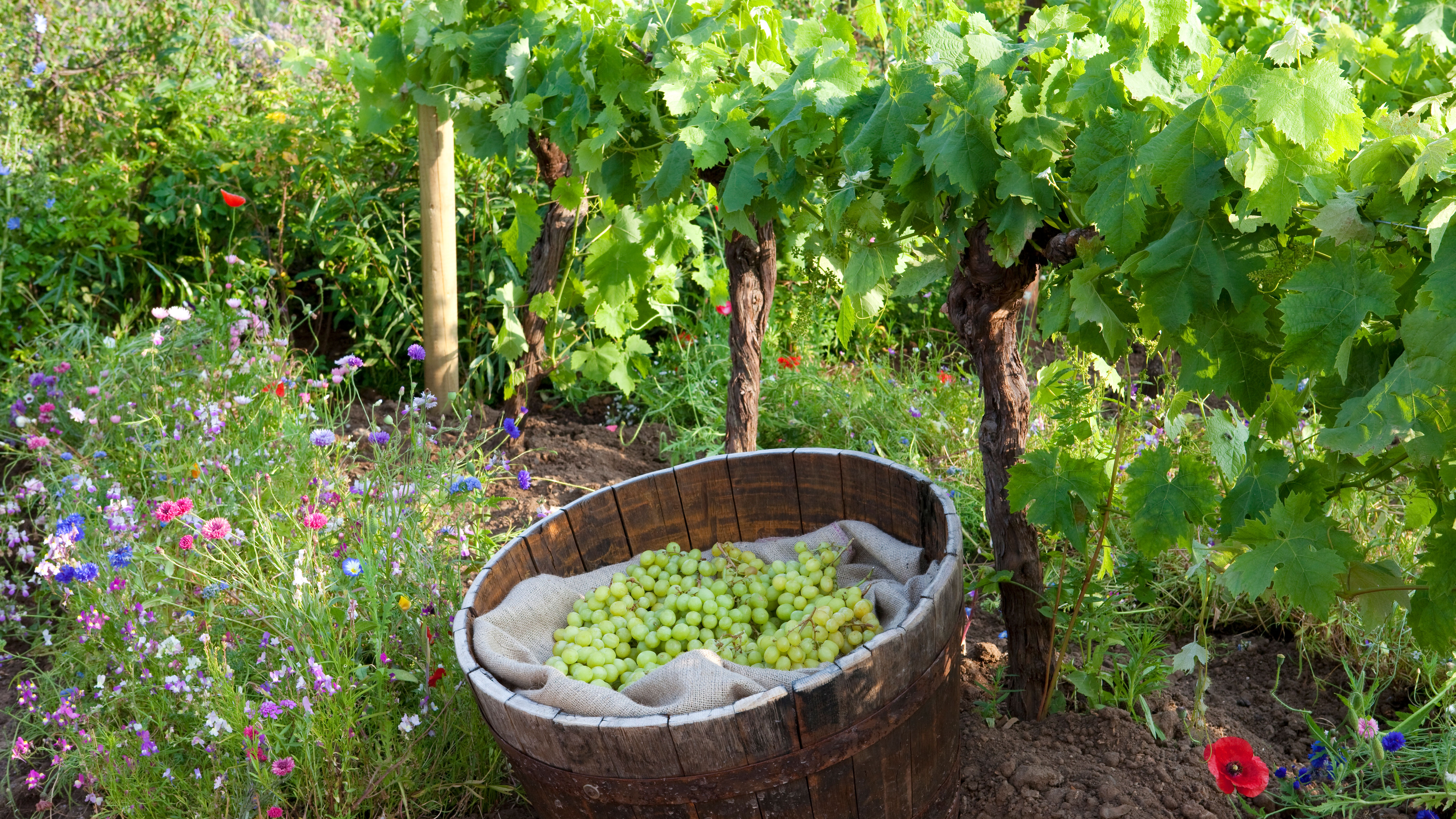
It’s important to know how to prune grape vines correctly so you can keep your plant healthy and get the most out of your grape harvest.
Grapes are woody perennial plants and enjoy warm, sunny positions either in a greenhouse or against a sunny but sheltered fence or wall in the garden. This makes them a great addition to any yard, and as fast growing flowering vines, you can enjoy their pretty flowers as well as their fruit.
Whether you grow grapes for eating or to make wine as part of your vegetable garden ideas, grown indoors when you are planning a greenhouse, or outdoors against a south-facing wall, grape vines will need regular pruning and training to keep them under control.
In addition, grape vines produce fruit on the current year's growth, so knowing exactly how to prune grape vines is really important if you want a bountiful crop.
How to prune grape vines

Grape vines require heavy pruning for the best production of grapes.
'Pruning is one of the most important practices in the vineyard. The main pruning occurs in winter, when vines are dormant, and sets the tone for the new growing season ahead,' says Jennifer Putnam, executive director and CEO for the Napa Valley Grapegrowers, a nonprofit based in Napa Valley, CA.
If you are growing other fruits, some will also need to be pruned in winter, so set aside some time to tend to them together – for example, if you’re pruning lemon trees.
Design expertise in your inbox – from inspiring decorating ideas and beautiful celebrity homes to practical gardening advice and shopping round-ups.
'Through pruning, growers can create a balance between vegetation and fruit production, which achieves grape yield, maturity, and quality,' Jennifer adds.
The way you prune will largely depend on what type of grape vine training system you have adopted – or, in other words, the shape you want it to develop around your vegetable garden trellis ideas.
'Training systems should be selected appropriate to the variety of grape,' advises Jillian Degolyer, owner of Double A Vineyards.
'Native American vines (especially) have large leaves and a drooping growth habit, so high wire training systems, such as Hudson River umbrella, or other top wire systems, are generally used for them.'
Pruning grape vines year by year
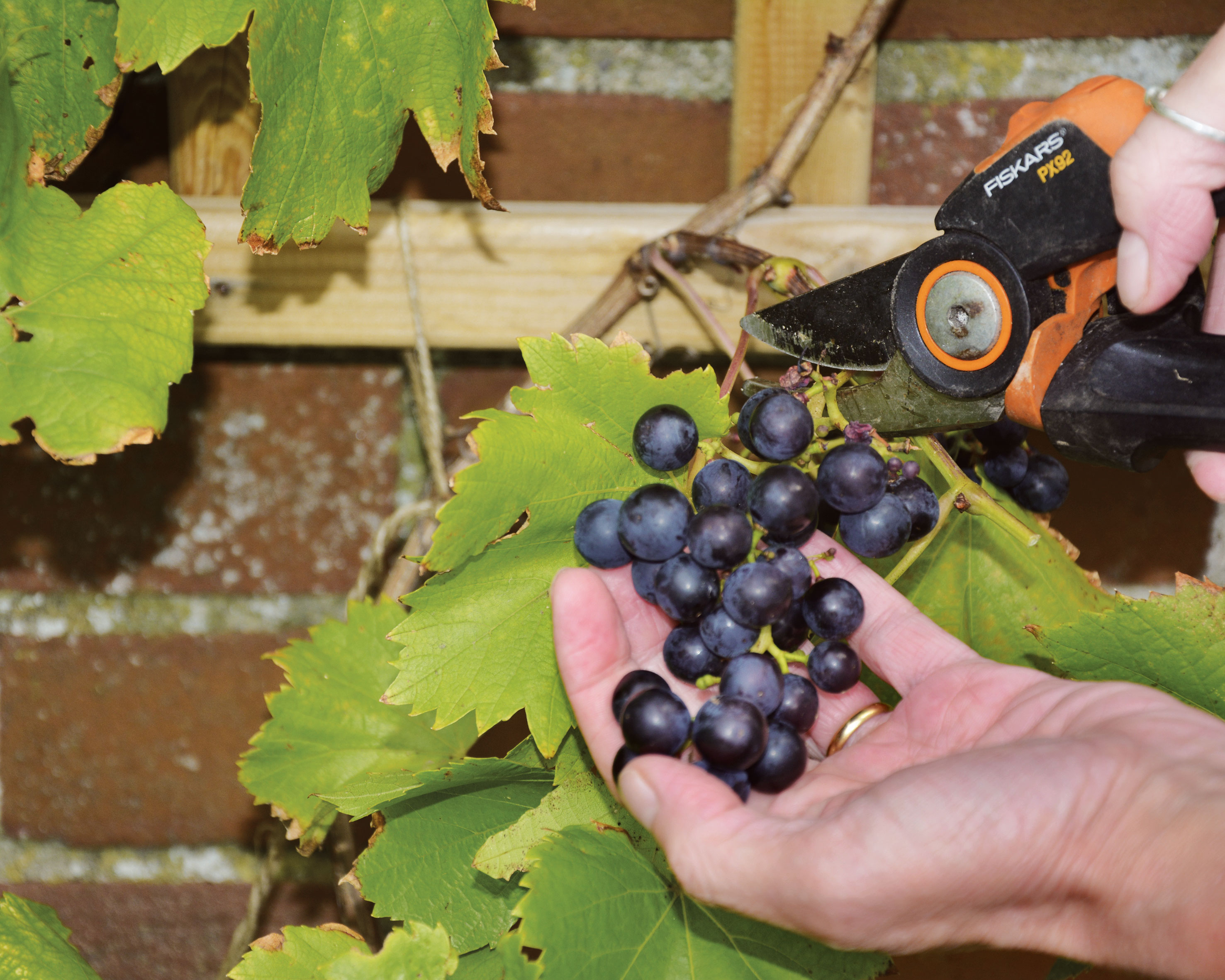
The trick to knowing how to prune grape vines is adopting the correct method for each year of growth.
Year one pruning
'The primary goal in pruning grape vines in the establishment year is to grow a healthy root system,' advises Jillian Degolyer.
The idea is to reduce the number of buds on the vine so that the energy is concentrated into producing 'at least one shoot that will develop into a cane that can be selected for growth the following year', she adds.
The vine can be supported with a bamboo cane at this stage, and it’s also important to stay on top of weeding.
Year two pruning
For how to prune grape vines in the second year, 'begin training growth to the desired training system', says Jillian. 'Vines should be pruned to a single cane that will produce six to 12 healthy shoots.'
Shoot growth in year two should start to fill the trellis space allotted to the vines. Any fruit that develops should be removed by flower or fruit cluster thinning, as any fruit that is left to develop in this year will, 'compete with vine reserves needed to develop the root system'.
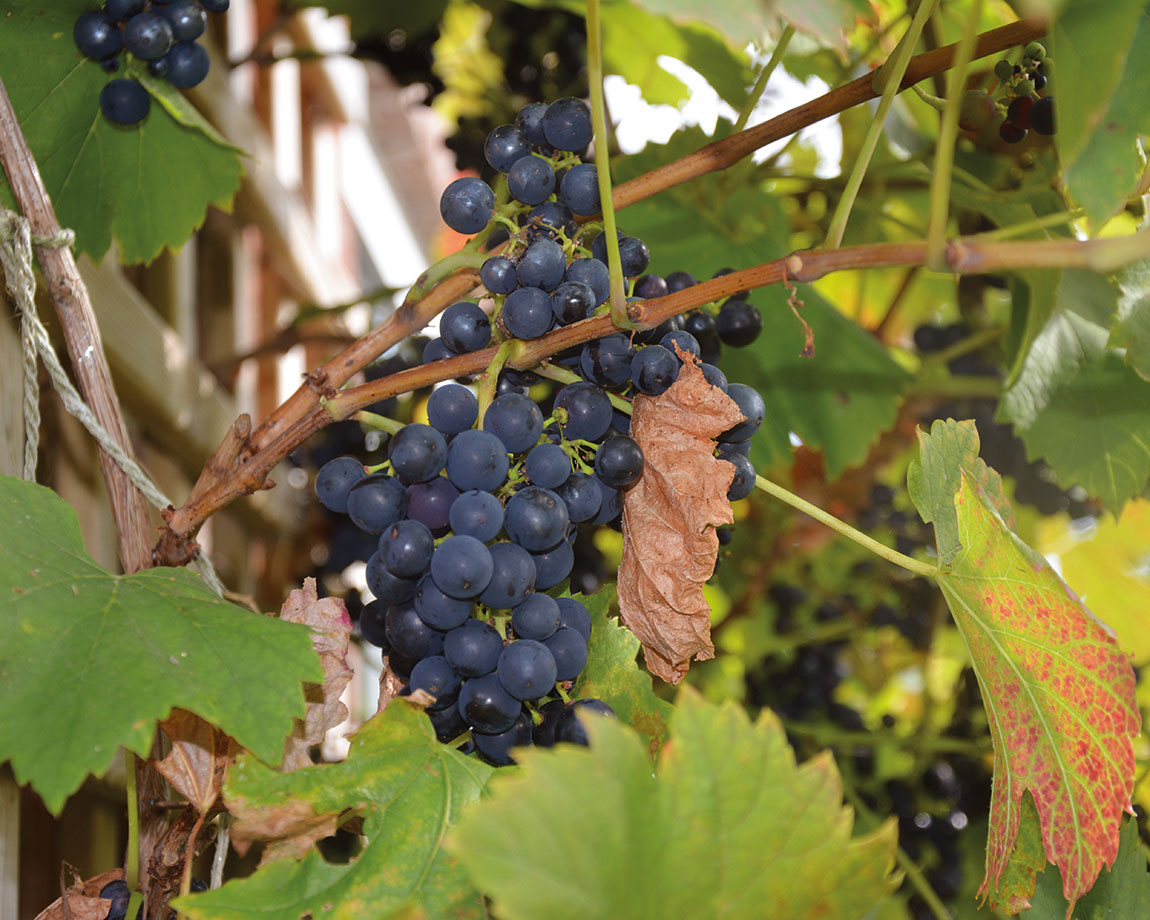
Year three pruning
The desired shape of the vine should be achieved during the third growing season and you should be able to harvest at least a partial crop.
The goal with pruning your mature grape vine is to regulate the crop size and 'to focus the position of the fruit', advises Jeffrey Wheeler from grape vine supplier Novavine .
'It’s much easier to harvest the crop when the fruits are positioned close, but not too close, to each other,' he adds.
How to prune a mature grape vine
To prune a mature grape vine, 'just walk down the vine row and chop all of the dormant canes down to “spurs” of two, or three, dormant buds. A spur is a dormant cane that has been cut back to only a few inches, with only two or three visible “buds” on its length,' advises Wes Hagen, brand ambassador for Miller Family Wine Co and writer for Wine Maker Magazine.
You can cut back grape vines hard as they are quick and strong growers and only fruit on new growth.
When should grapevines be pruned?
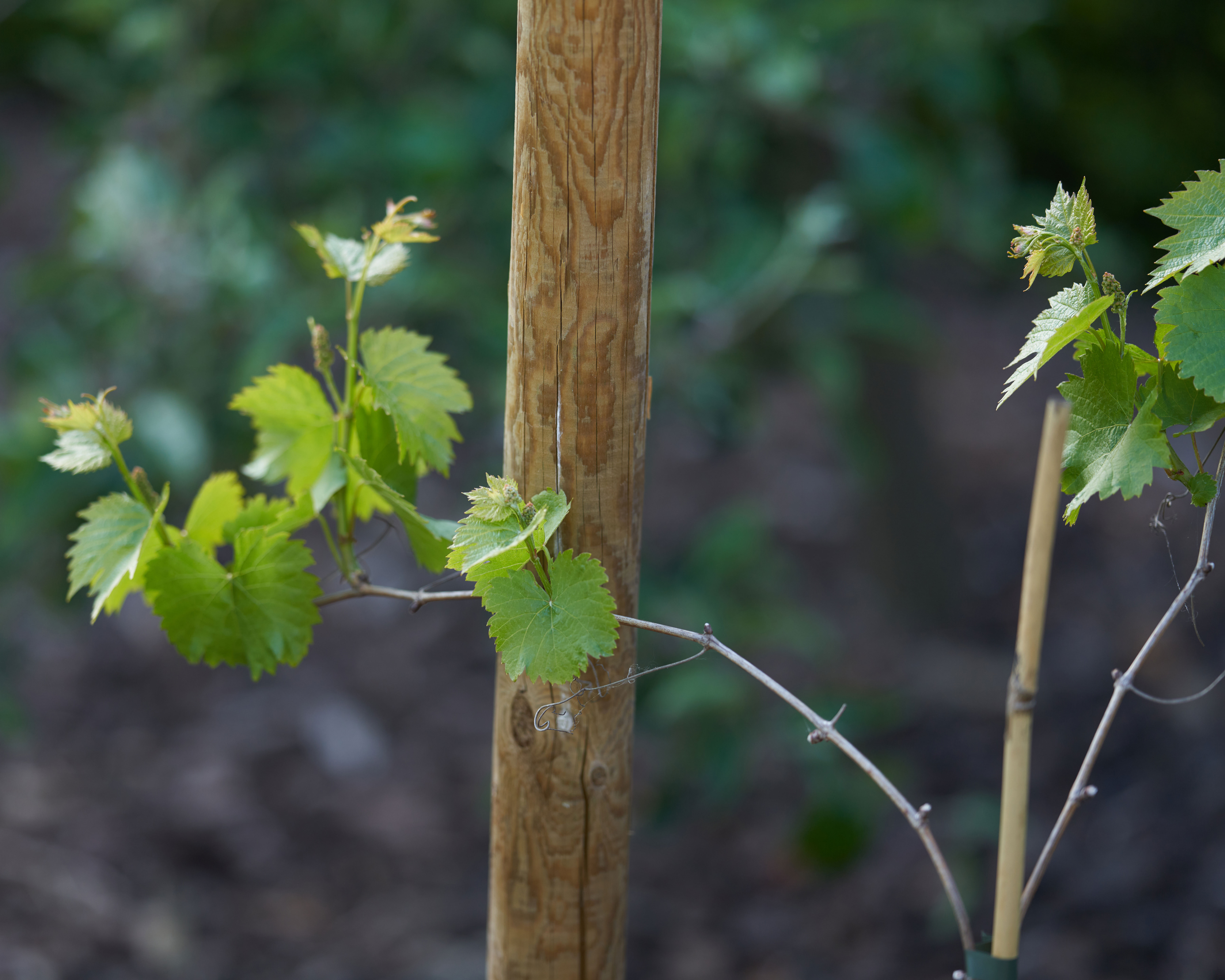
Ultimately, grape vines should be pruned when they are dormant. That means when there have been no buds developing on them for at least a month.
'The best time to prune grape vines is from late fall to early spring,' explains Jeffrey Wheeler.
However, the best time for pruning can differ depending on the weather conditions where you live.
'If you live in an extremely cold climate, there may be other factors involved in pruning and timing the practice. Always seek out professional viticulturists or nurserymen in your area to aid you in the timing of your pruning,' advises Wes Hagen.
How far do you prune a grape vine back?
When thinking about how to prune grape vines, you should be selecting last year's old wood and cutting back to about three nodes per spur.
Research has found that 'vines pruned to too few buds will reduce crop unnecessarily and vine growth will tend to be overly vegetative and vigorous', explains Jillian Degolyer.
Luckily, for the home grower, it’s hard to go too wrong. 'Unless you cut the trunk of the vine from the root system, you won’t kill the vine or stop it from producing fruit,' reassures Wes Hagen.
How do you maintain grape vines?
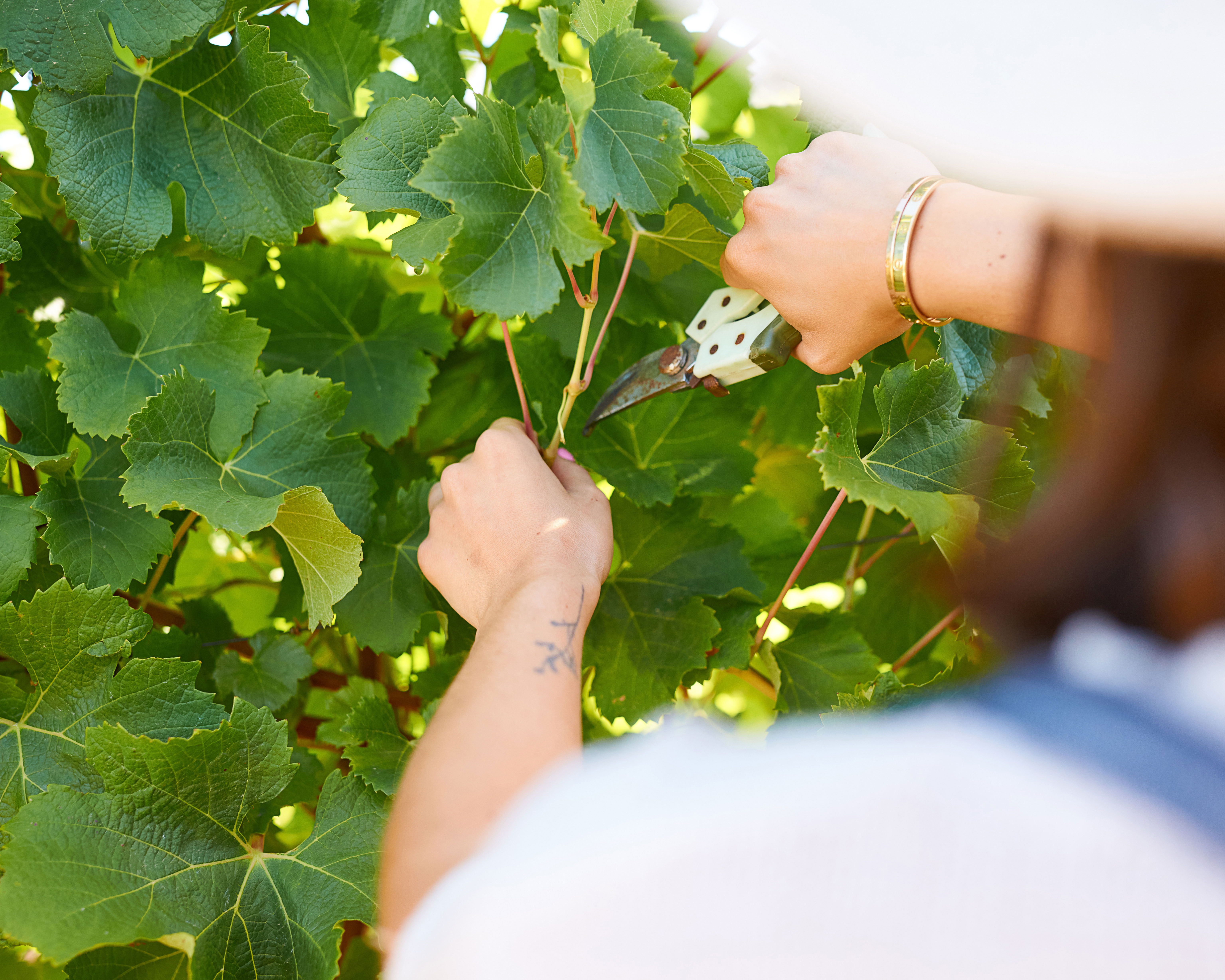
You may also need to cut back grape vines in late spring to take out a lot of the new growth apart from the developing stems that will create the structure of the vine.
Reduce bunches on side shoots to about two per side shoot so the vines put their energy into bigger and better grapes rather than lots of small ones.
In summer, you may also need to thin grape bunches, removing smaller grapes, to allow good ventilation and give the developing larger and healthier grapes space to grow.

Emma received the keys to her first allotment plot in 2019 and has been documenting her progress on Youtube and Instagram ever since. As the allotment grew, so did her love of gardening and her follower count. Emma has a passion for writing and has contributed articles to Kitchen Garden magazine and Life lovers magazine, as well as starting her own blog – the pink shed.
Growing food has become one of her biggest passions and she enjoys sharing her trials and errors with her audience in a funny, honest and informative way.